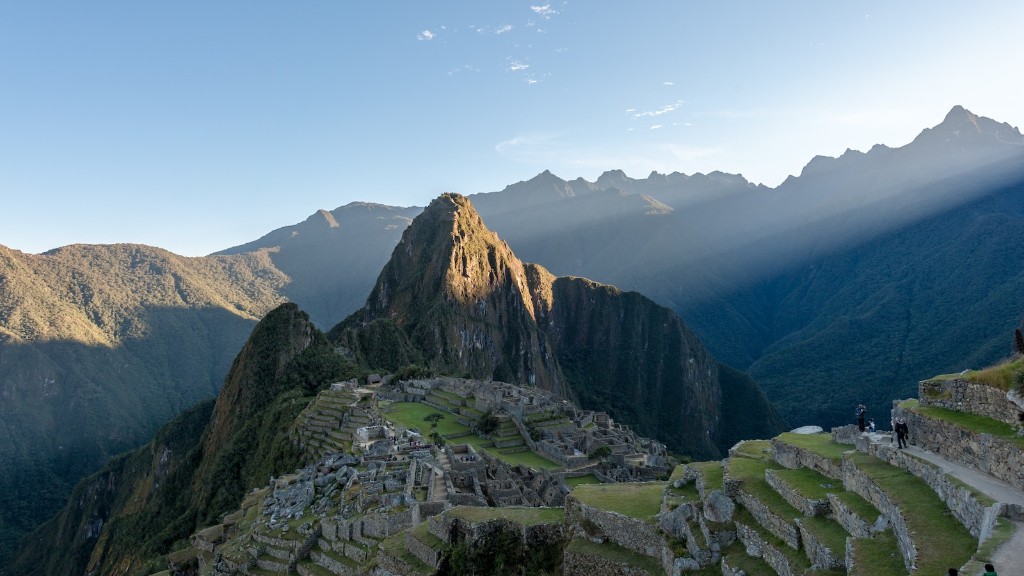Mount Kilimanjaro, the highest mountain in Africa and one of the world’s most famous landmarks, is a dormant stratovolcano and thus, is no longer erupting. But when was the last time Mount Kilimanjaro erupted, and how did its volcanic activity shape the ecosystem of the mountain? A careful examination of its geologic history reveals the answers to these questions.
Located in northern Tanzania, Mount Kilimanjaro has a long geologic history that spans millions of years. A recent analysis of its geology revealed that the last period of eruption occurred some 360,000 years ago. At the time, Kilimanjaro was an active stratovolcano, and evidence shows that lava and ash explosively blew off its summit.
Geologists theorize that this period of volcanic activity created part of the mountain’s unique and diverse soils. Research suggests that volcanic ash and lava helped to enrich the soils, creating more fertile conditions than are typically found on the African savannah. The soils formed during this period are known as andosols, and are nutrient-rich and well-drained. This makes them ideal for the growth of certain plants, such as the native species of Lobelia and Senecio, that thrive at high altitudes.
The other notable effect of Kilimanjaro’s volcanic past is its jagged, sculpted peaks. As the volcano’s eruptions blasted off the top of the mountain, the remaining material was carved into sharp and angular features. Today, these features are commonly referred to as “Kilimanjaro’s crown,” and serve as a reminder of its volcanic past.
It’s clear that Mount Kilimanjaro is a product of its rich volcanic past, and that this activity has had a lasting impact on the mountain’s ecosystem. The rocky, jagged peaks, rich andosols, and unique species of plants all owe their existence to the last eruption of Kilimanjaro, which occurred almost 360,000 years ago.
Upliftment of the mountain
Mount Kilimanjaro’s past volcanic activity helped to lift and form the mountain’s current jagged peaks. The explosive blasts of lava and ash that occurred 360,000 years ago reshaped the top of the mountain, pushing it upwards and giving it its signature jagged features. Over millions of years, the crust of the Earth has continued to cool and contract; this has caused further upliftment of the mountain, helping to create its steep sides and angular features.
The upliftment of Kilimanjaro is also partially the result of a large fault in the Earth’s crust underneath the mountain, which is known as the Great Rift Valley. This fault is slowly pushing the mountain upwards at a rate of 1 mm per year. This process, combined with its eruptive past, has helped to shape the unique and majestic form of Kilimanjaro.
Today, Mount Kilimanjaro stands tall at an elevation of 5,895 m (19,341 ft.), making it the highest mountain in Africa and one of the world’s most iconic landmarks. Its jagged peaks, dramatic slopes, and beautiful snowfields are a testament to its rich volcanic past and geologic evolution.
Impact of the last eruption on climate
The last major eruption of Kilimanjaro 360,000 years ago had a profound impact on the climate of the region. The eruption injected a large amount of volcanic ash and gas into the atmosphere, which helped to cool the Earth’s surface temperature and trigger a temporary glacial period in East Africa.
The ash and gas also caused a decrease in precipitation in the area. Studies show that this volcanic winter lasted several hundreds of years, causing drought and desertification in the region. While this period of climate change is believed to have been relatively short-lived, it had a major impact on the environment, which can still be seen today.
Mount Kilimanjaro’s last eruption profoundly changed the landscape of the region. This phenomenon, known as “volcanic winter,” coupled with slower cooling due to upliftment, has caused the mountain’s snow fields to slowly shrink and its glaciers to continually recede.
This phenomenon is known as “glacial recession,” and it is expected to continue happening in the future. As temperatures continue to rise and glaciers recede, it is estimated that Kilimanjaro’s snowfields will disappear completely in the next few decades.
Impact on the surrounding biodiversity
Kilimanjaro’s diverse range of soils, formed from its eruptive past, creates ideal conditions for a range of unique species of plants and animals. The more fertile andosols found on the mountain are home to a wide variety of endemic species, many of which are threatened with extinction.
These species, such as the Kilimanjaro tree hyrax, the Colobus monkey, mountain reedbuck, and Caracal lynx, are specially adapted to the mountain’s environment and are heavily dependent on the presence of its diverse range of soils for their survival. Without these soils, their habitats and food sources would disappear, leaving them at risk of extinction.
Kilimanjaro’s diverse and unique biodiversity provides researchers and conservationists with the perfect opportunity to study and protect some of the world’s most rare and unusual species. By preserving the mountain’s rich soils, we can ensure the protection of these species and their delicate habitats.
Effect on the local climate
Kilimanjaro’s last eruption 360,000 years ago had a major impact on the climate of the region, which can still be felt today. Studies show that the eruption injected a large amount of volcanic ash and gas into the atmosphere, which helped to cool the Earth’s surface temperature and trigger a temporary glacial period in East Africa. Furthermore, the eruption could have caused a decrease in precipitation in the area, resulting in drought and desertification.
Today, the mountain still plays a role in influencing the climate of the region. As the snowfields and glaciers on Kilimanjaro recede, the process of albedo is reduced. Albedo is the process of reflected light, and when snow melts it reduces the amount of sunlight that is reflected back into the atmosphere. This can then cause local temperatures to rise, potentially causing further drought and desertification in the area.
Kilimanjaro’s glacial recession and its effects on the local climate demonstrate how powerful a force volcanism can be in shaping our environment. This can serve as a reminder that, while the mountain is no longer erupting, its past activity has had a lasting and continual influence on the landscape of the region.
How long will the impact persist?
The effects of Kilimanjaro’s last eruption 360,000 years ago are still evident today. Even though the mountain is no longer actively erupting, its rich soils, diverse species, and jagged peaks all owe their existence to the volcanic activity that took place in its ancient past.
As global temperatures continue to rise, these effects are expected to intensify. The glaciers and snowfields on the mountain are continuing to recede, and this phenomenon is expected to continue in the future. It is estimated that Kilimanjaro’s snow fields will disappear completely in the next few decades.
Kilimanjaro’s past volcanic activity has had a profound impact on the surrounding landscape, and its effects will be felt for many years to come. Through further research and conservation efforts, we can ensure that the unique and diverse species of the mountain continue to survive and thrive in the face of volcanic impacts.

